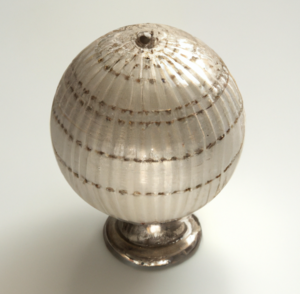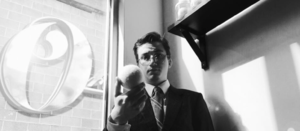Orbsmann's: Difference between revisions
No edit summary |
|||
| Line 1: | Line 1: | ||
[[File:Orbsmann.png|thumb|Orbsmann's Logo]] | [[File:Orbsmann.png|thumb|Orbsmann's Logo]] | ||
[[File:Unidentified man NLW3364625.jpg|thumb|Samuel Orbsmann 1886]] | [[File:Unidentified man NLW3364625.jpg|thumb|Samuel Orbsmann 1886]] | ||
[[Orbsmann's]] is an American company that makes white [[Orb|orbs]] and was founded in 1880 by Samuel Orbsmann. The company is based in the United States and its products are sold worldwide. Orbsmann's orbs are made of a special type of material that is said to be unbreakable. The company claims that their orbs can be used for a variety of purposes, including decoration, paperweights, and even stress relief. Orbsmann's has been featured in a variety of publications, including The New York Times, The Wall Street Journal, and Forbes. | [[Orbsmann's|'''Orbsmann's''']] is an American company that makes white [[Orb|orbs]] and was founded in 1880 by Samuel Orbsmann. The company is based in the United States and its products are sold worldwide. Orbsmann's orbs are made of a special type of material that is said to be unbreakable. The company claims that their orbs can be used for a variety of purposes, including decoration, paperweights, and even stress relief. Orbsmann's has been featured in a variety of publications, including The New York Times, The Wall Street Journal, and Forbes. | ||
Orbsmann's was purchased by [[The Fanmayer Group]] in 2015 but has retained Sam Orbsmann, the great grandson of the companies founder, as it's CEO and chief design engineer. | Orbsmann's was purchased by [[The Fanmayer Group]] in 2015 but has retained Sam Orbsmann, the great grandson of the companies founder, as it's CEO and chief design engineer. | ||
| Line 10: | Line 10: | ||
When Samuel Orbsmann reached the united states in 1876, he had very little money and started the company by making orbs that were used as doorstops. The company gradually began to expand its product line and by the early 1900s was making a variety of different products, including large orbs and miniature orbs. Orbsmann's orbs were especially popular during the Art Deco period and were used by a variety of famous designers, including Rene Lalique and Louis Comfort Tiffany. The company continued to grow throughout the 20th century and today is a well-known manufacturer of a variety of different orbs. | When Samuel Orbsmann reached the united states in 1876, he had very little money and started the company by making orbs that were used as doorstops. The company gradually began to expand its product line and by the early 1900s was making a variety of different products, including large orbs and miniature orbs. Orbsmann's orbs were especially popular during the Art Deco period and were used by a variety of famous designers, including Rene Lalique and Louis Comfort Tiffany. The company continued to grow throughout the 20th century and today is a well-known manufacturer of a variety of different orbs. | ||
== Orbsmann's " | == Orbsmann's "Copycats" == | ||
[[File:1933orb.png|thumb|An Orbsmann's Copycat Orb made by an unknown street vendor, 1936. Sold at auction for $200,000,000.00 USD|left]] | [[File:1933orb.png|thumb|An Orbsmann's Copycat Orb made by an unknown street vendor, 1936. Sold at auction for $200,000,000.00 USD|left]] | ||
During the mid 20th century many manufacturers began to copy orbsmann's designs. In order to protect his designs, orbsmann patented his process of making orbs in 1933. Orbsmann implemented the now infamous "Orbsmann's Copycat Program" in order to find and stop companies that were infringing on his patent. | During the mid 20th century many manufacturers began to copy orbsmann's designs. In order to protect his designs, orbsmann patented his process of making orbs in 1933. Orbsmann implemented the now infamous "Orbsmann's Copycat Program" in order to find and stop companies that were infringing on his patent. | ||
Revision as of 06:15, 9 March 2023
Orbsmann's is an American company that makes white orbs and was founded in 1880 by Samuel Orbsmann. The company is based in the United States and its products are sold worldwide. Orbsmann's orbs are made of a special type of material that is said to be unbreakable. The company claims that their orbs can be used for a variety of purposes, including decoration, paperweights, and even stress relief. Orbsmann's has been featured in a variety of publications, including The New York Times, The Wall Street Journal, and Forbes.
Orbsmann's was purchased by The Fanmayer Group in 2015 but has retained Sam Orbsmann, the great grandson of the companies founder, as it's CEO and chief design engineer.
History
Orbsmann's was founded in 1880 by Samuel Orbsmann, a German immigrant to the United States. The company is based in New Jersey and its products are sold worldwide.
When Samuel Orbsmann reached the united states in 1876, he had very little money and started the company by making orbs that were used as doorstops. The company gradually began to expand its product line and by the early 1900s was making a variety of different products, including large orbs and miniature orbs. Orbsmann's orbs were especially popular during the Art Deco period and were used by a variety of famous designers, including Rene Lalique and Louis Comfort Tiffany. The company continued to grow throughout the 20th century and today is a well-known manufacturer of a variety of different orbs.
Orbsmann's "Copycats"
During the mid 20th century many manufacturers began to copy orbsmann's designs. In order to protect his designs, orbsmann patented his process of making orbs in 1933. Orbsmann implemented the now infamous "Orbsmann's Copycat Program" in order to find and stop companies that were infringing on his patent.
The process involved Orbsmann's sending out spies to visit factories and identify which companies were copying his design. Once a company was identified, Orbsmann's would send them a cease and desist letter and often times the company would comply and stop production. If the company refused to stop production, Orbsmann's would then take them to court.
The program was successful and helped Orbsmann's maintain its position as the leading manufacturer of orbs.
Today, "copycat" orbs from this era fetch a much higher price than original Orbsmann orbs due to their rarity.



